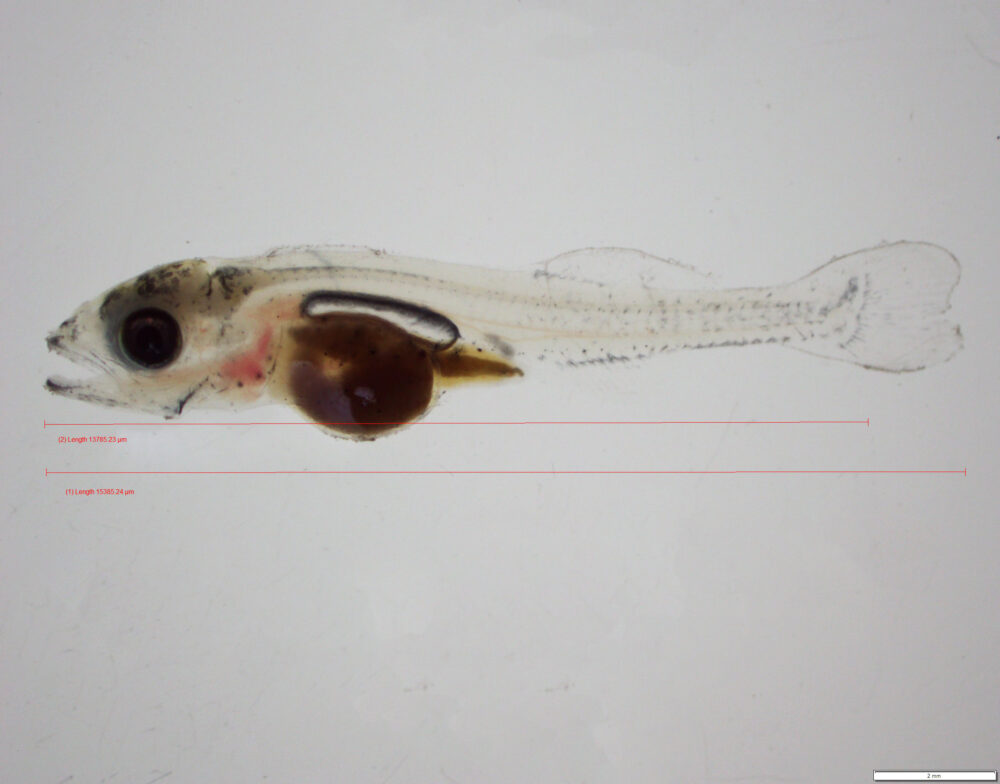Initial Dietary Protein Source and Palatability Enhancer for Successful Production of Fingerlings
FUNDED BY: THE NORTH CENTRAL REGIONAL AQUACULTURE CENTER
THE BACKGROUND
One of the major goals of the aquaculture industry is to replace marine fishmeal with alternative protein sources derived mostly from plants. Although some progress has been made with cost-effective fishmeal substitutes, such as soybean meal (SBM), a number of concerns must be overcome. These include low palatability, imbalanced amino acid profile, or a presence of anti-nutritional factors responsible for inducing intestinal inflammation. Thus, the aquafeed industry has focused on ways of including some of the more cost-effective alternative sources of protein. This initiative would help to further replace marine fishmeal but also substitute some of the expensive high-quality plant protein concentrates. This would also provide greater flexibility in feed formulations using a wider range of locally available raw materials.
SPECIES OF INTEREST
Both yellow perch and walleye, have received tremendous interest in the Midwest in the past few decades due to high market demand and the decline of wild populations. Consequently, there has been an increasing pressure on the production of these species to help to satisfy the market and help reduce the pressure on natural resources. The expansion of these species for the aquaculture industry on a large scale, however, has been constrained by several factors. These include low survival and difficulty in feed training of larval and juvenile stages. More commercial feeds, however, now rely on a large proportion of plant meals.
Although some Percids (the family of walleye and yellow perch), have been reported to utilize high quality plant protein concentrates, they have also been found to be sensitive to dietary inclusion of ingredients such as soy bean meal. Consequently, the inability of fish to be raised on lower cost feeds with higher inclusion of soy bean meal has been considered as the major bottleneck to further expansion of Percid production in the North Central Region.
 Larval walleye raised intensively at UWSP NADF
Larval walleye raised intensively at UWSP NADF
THE PROTEIN SOURCE
“Asian carp” mostly refers to Silver Carp and Bighead Carp species, which in the last few decades have threatened the Great Lakes via their uncontrollable dispersion from previously established populations. Harvest has been considered as one of the approaches to reducing Asian carp abundance. However, considering that Asian carp are not favored food fish in the US finding a local market for the fish has been a challenge. In the last few years, there have been discussions to utilize Asian carp as fishmeal. In fact, Asian carp body composition has been reported similar compared to traditional more expensive marine fishmeal sources. Asian carp has also been suggested as a source of protein hydrolysate (protein broken down to smaller fractions) and antioxidants, hence providing alternative application for the use of these invasive fish as “functional” or health-promoting ingredient.
This study proposes the next important step, which is evaluation of Asian carp muscle as an initial protein source and dietary attractant for successful larval rearing and juvenile weaning of both yellow perch and walleye
THE PROJECT
Asian Carp as an innovative dietary protein source could potentially provide more control in production of Percid fingerlings by increasing dry diet acceptance and exposure to plant-based formulation at the earliest possible age. This innovative dietary ingredient and knowledge derived from the study will provide the aquaculture industry with the new approach for the development of high-quality starter feeds. This will support the sustainable expansion of the hatchery sector and consequently contribute to the development of competitive aquaculture market within the North Central Region.
Objectives:
1. To develop the optimal in vitro methodology for Asian carp muscle digestion using digestive enzymes obtained from adult yellow perch and walleye. This will be used as a protein source and attractant in dietary formulations for larval and juvenile yellow perch and walleye.
2. To evaluate the effect of Asian carp muscle protein hydrolysate obtained using methodology in Objective 1 as protein source in diets for yellow perch and walleye when used as first feed.
3. To evaluate the effect of Asian carp muscle protein hydrolysate obtained using methodology in Objective 1 as an additive/palatability enhancer in diets for yellow perch and walleye on successful weaning to formulated feeds.
4. To evaluate the effect of Asian carp muscle protein hydrolysate combined with soybean meal hydrolysate – both obtained using methodology in Objective 1, as additives in diets for yellow perch and walleye for successful weaning to formulated feeds and easier transition to plant-based feeds.
5. To provide the aquaculture community within the region with guidelines on successful larval rearing protocols for both yellow perch and walleye in indoor systems.
6. To provide the feed/additive manufacturing industry with the knowledge and the tools required for production of high-quality well-digested dietary protein hydrolysate as a cost-effective source of protein and attractant for young fish feeds.
THE PARTNERS
- UW-Stevens Point Northern Aquaculture Demonstration Facility
- Southern Illinois University-Carbondale
- Illinois-Indiana Sea Grant Purdue University